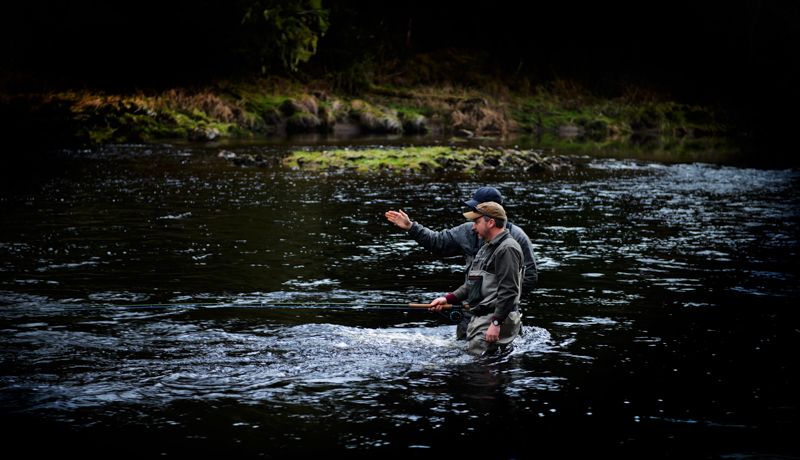
Becoming more productive on the water is the goal of nearly every spey angler. Compared to single hand casting techniques, perfecting both the cast and the accompanying drift with a spey rod can be the most technically and mentally difficult challenge any angler can face. During times when fish are stubborn, it is very easy to switch gears back to other proven and familiar methods. This can be especially true when you see other anglers hooking fish all around you. Here are a few tips to step up your spey fishing game and build the confidence to fish productively anytime, anywhere.
Dissect The River....
The best way to dissect a run is by breaking it down into smaller pieces. Experienced anglers know this and understand exactly where their fly begins to actually "fish." Depending on your casting angle and targeted depth, your fly can start to "fish" immediately, or when faced with fast or deep water scenarios, it may reach the targeted zone late into the drift. Divide the river into manageable pieces, and make sure you are covering the entire area thoroughly.
Consistently Adjust....
Because all river situations are not created equally, you cannot rely on one particular spey tip and fly combination to effectively fish all situations. While it may not seem like it, time spent adjusting and not fishing, is usually time well spent. Slow down your progression through the run, always making sure you are confident in the swing speed and depth. If at any time you get the feeling that your fly is not in front of the fish, stop and adjust. During tough times many fish will not go out of their way to strike an imperfect presentation. So, keep your fly in the zone, and find more fish will come to hand.
Fish Every Cast....
The only way to catch fish is by keeping your fly wet. Spey casting aficionado and renowned guide, Kate Taylor, said it perfectly at a recent spey-clave in Anchorage. She told participants that she always makes sure to have her clients fish out every cast. It does not matter if the cast is imperfect, because each cast has the potential to connect you with the fish of a lifetime. When out on the water, spend your time actually fishing, as opposed to working on your cast. If casting perfection is your goal, get out and practice aside from your fishing time. This simple bit of advice has proved its weight in gold time and time again for many anglers.
Lee Kuepper is professional guide now calling the Kenai River home, spending his time chasing the Kenai's fabled Rainbow Trout on a regular basis. He is a Pro-Ambassador for Loop USA and is a Certified Fly Casting Instructor through the FFF.